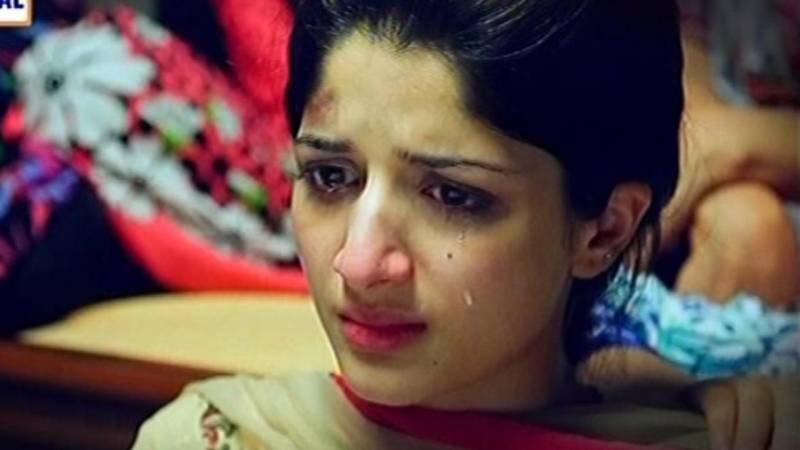
A drama is a vast canvas that cannot be detached from the ground realities of society. A good drama impartially portrays every aspect of life and does not paint the whole scenario with one broad brush. Sadly, from Lollywood films during the 1970s through to the high-profile Pakistani television serials of today, almost every story is heavily laced with societal stereotypes. On the other hand, Pakistani culture is much more than what we see on TV. To give you a glimpse of the stereotypical rut that Pakistani dramas continue to be stuck in, along with tips on what to do about it, here we discuss 5 of the most common stereotypes that are a hallmark of almost all Pakistani dramas.
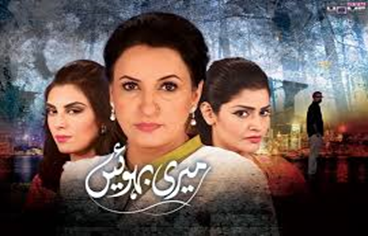
Almost every family has some Saas vs Bahu issues. This is true not only in Pakistan but about most cultures with both sides trying to obtain or maintain their superiority in the domestic power structure. However, what’s annoying are dramas based solely on this idea as if that is the only thing going on in every desi household.
Just for the sake of some mirch masala, which we often sugarcoat with words like TRP (Television Rating Points), both the writer and producer focus on stories that have the same underlying theme. Either the Bahu is incredibly badtameez and domineering or the Saas portrayed as the evilest creature to ever walk on Earth.
We need more plays like Dil Lagi where the characters disagree with each other but in a respectful way. There is no doubt that fights, hatred, and controversies are a part of life. But, so is love and harmony.
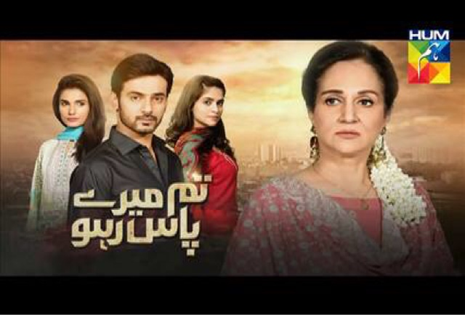
Just like me, I am sure you all are now sick of seeing plays with repetitive themes having two characters head over heels in love with one person. Simple romantic relationships seem to have become a thing of the past. Now we have not just love triangles but also extra-marital affairs left, right, and center. The male protagonist just has to fall for his secretary, female colleague, or a younger and more beautiful cousin while a faithful wife with 4 kids waits all day long for him at home.
Since she is a stay-at-home parent or what you call a gharailu aurat, she is no longer as attractive and beautiful in her husband’s eyes as the professional women he sees at work every day. Thus, our hero is almost always ready to fall for any pretty girl who blinks at him twice. While in some cases, it is the heroine who carries the torch for her husband’s friend who seems much nicer and caring towards her than her own husband.
The myriad dramas on this theme have the potential to make you feel nauseous if you decide to sit through an episode of them.
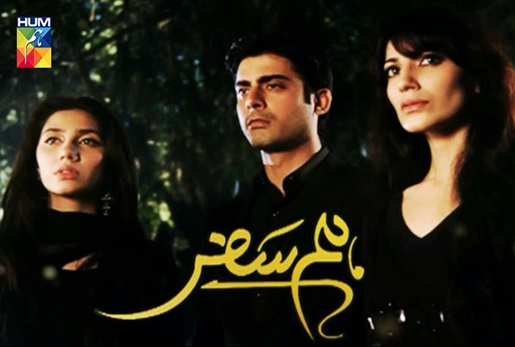
Class difference is real; there is no doubt about it. Two lovebirds can belong to different financial backgrounds but why does everything have to be so extreme? In Pakistani dramas, the rich one just has to own fancy cars in his garage like in the drama Kuch Na Kaho. (Just a thought, can you really drive such a freakish, whimsy car on the roads of Pakistan?) On the other hand, the poor are almost always on the brink of starvation. Khani and Gul-e-Raana are apt examples of this theme.
There is nothing wrong with such scripts but the problem lies in the fact that these themes have become a stereotype and almost like a standard operating procedure for most drama creators. The rich girl just has to be both rich and mean like Sarah in Hamsafar or Asmarah in Zindagi Gulzar Hai. And the middle-class girl is always the Sati Savitri (Kashaf from Zindagi Gulzar Hai and Khirad from Humsafar). She is used to a hand-to-mouth existence but is really smart and a fine young lady capable of achieving anything she dreams of.
It is high time that we introduce more realistic characters on the small screen. These elements have become so popular that even strong novelists like Umera Ahmed struggle to come out of this thematic premise.
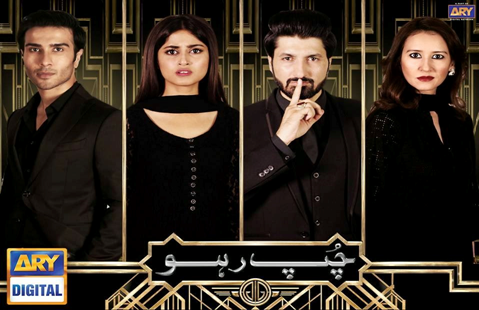
From the very beginning of its existence, the Pakistani entertainment industry can only think of one evil which is both highly revolting and fear-inducing, the chauvinist man. I am pretty sure that while watching these Pakistani dramas, the audience cannot help but think that all men are egotistical chauvinist maniacs whose only goal in life is to put women down and feel good about it.
Themes with cruel and chauvinist men have become so clichéd that it almost seems like a default social reality now. Most of the fathers are bad; while the rest of them are so ineffective they cannot even stand tall for their family, leaving their women with all to do for the kids. Why are powerful men always presented as malicious? Isn’t there ANY good instance of righteous men in our society? Are all men born evil who revel in destroying the women around them?
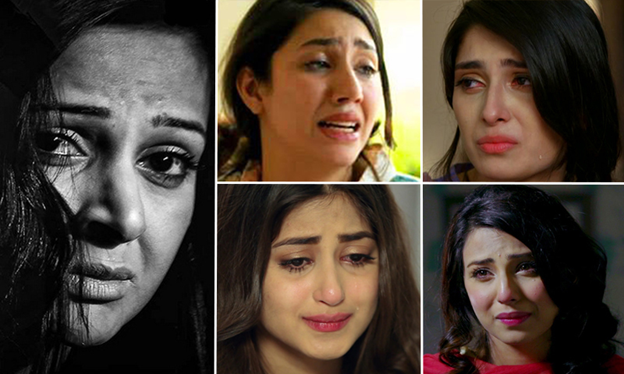
Honestly, Pakistani entertainment industry is divided into two extremes. Things are either black or white; there are no shades of grey in anything. There is a glaring lack of character diversity. For example, sobbing girls are a common theme in most drama serials now. Such characters get a lot of sympathy and attention from the audience. In fact, it is more like a hit formula these days. Every new actress has to play the routi surat character in order to gain popularity and consolidate their place in the industry. There is no such thing as pragmatics anymore.
Take it from an ardent lover of Pakistani dramas. It is high time we let go of these age-old conventions and stereotypes. The aim should be to create more timeless masterpieces like Aangan. There is a lot more to Pakistani culture and traditions. It will be a grave injustice to pomp the rainbow with one shade unless we deliberately want to blur half of the truth.
- Saas v/s Bahu: A Game of Thrones

Courtesy: Pakistani Dramas Online
Almost every family has some Saas vs Bahu issues. This is true not only in Pakistan but about most cultures with both sides trying to obtain or maintain their superiority in the domestic power structure. However, what’s annoying are dramas based solely on this idea as if that is the only thing going on in every desi household.
Just for the sake of some mirch masala, which we often sugarcoat with words like TRP (Television Rating Points), both the writer and producer focus on stories that have the same underlying theme. Either the Bahu is incredibly badtameez and domineering or the Saas portrayed as the evilest creature to ever walk on Earth.
We need more plays like Dil Lagi where the characters disagree with each other but in a respectful way. There is no doubt that fights, hatred, and controversies are a part of life. But, so is love and harmony.
- Love Triangles

The Absurdities of Pakistani Dramas
Just like me, I am sure you all are now sick of seeing plays with repetitive themes having two characters head over heels in love with one person. Simple romantic relationships seem to have become a thing of the past. Now we have not just love triangles but also extra-marital affairs left, right, and center. The male protagonist just has to fall for his secretary, female colleague, or a younger and more beautiful cousin while a faithful wife with 4 kids waits all day long for him at home.
Since she is a stay-at-home parent or what you call a gharailu aurat, she is no longer as attractive and beautiful in her husband’s eyes as the professional women he sees at work every day. Thus, our hero is almost always ready to fall for any pretty girl who blinks at him twice. While in some cases, it is the heroine who carries the torch for her husband’s friend who seems much nicer and caring towards her than her own husband.
The myriad dramas on this theme have the potential to make you feel nauseous if you decide to sit through an episode of them.
- Class Differences: Filthy Rich or Bankrupt

Class difference is real; there is no doubt about it. Two lovebirds can belong to different financial backgrounds but why does everything have to be so extreme? In Pakistani dramas, the rich one just has to own fancy cars in his garage like in the drama Kuch Na Kaho. (Just a thought, can you really drive such a freakish, whimsy car on the roads of Pakistan?) On the other hand, the poor are almost always on the brink of starvation. Khani and Gul-e-Raana are apt examples of this theme.
There is nothing wrong with such scripts but the problem lies in the fact that these themes have become a stereotype and almost like a standard operating procedure for most drama creators. The rich girl just has to be both rich and mean like Sarah in Hamsafar or Asmarah in Zindagi Gulzar Hai. And the middle-class girl is always the Sati Savitri (Kashaf from Zindagi Gulzar Hai and Khirad from Humsafar). She is used to a hand-to-mouth existence but is really smart and a fine young lady capable of achieving anything she dreams of.
It is high time that we introduce more realistic characters on the small screen. These elements have become so popular that even strong novelists like Umera Ahmed struggle to come out of this thematic premise.
- Men As Perpetual Chauvinists

Courtesy: Pak Drama Reviews
From the very beginning of its existence, the Pakistani entertainment industry can only think of one evil which is both highly revolting and fear-inducing, the chauvinist man. I am pretty sure that while watching these Pakistani dramas, the audience cannot help but think that all men are egotistical chauvinist maniacs whose only goal in life is to put women down and feel good about it.
Themes with cruel and chauvinist men have become so clichéd that it almost seems like a default social reality now. Most of the fathers are bad; while the rest of them are so ineffective they cannot even stand tall for their family, leaving their women with all to do for the kids. Why are powerful men always presented as malicious? Isn’t there ANY good instance of righteous men in our society? Are all men born evil who revel in destroying the women around them?
- The Sobbing Girl

Courtesy: Dawn.com
Honestly, Pakistani entertainment industry is divided into two extremes. Things are either black or white; there are no shades of grey in anything. There is a glaring lack of character diversity. For example, sobbing girls are a common theme in most drama serials now. Such characters get a lot of sympathy and attention from the audience. In fact, it is more like a hit formula these days. Every new actress has to play the routi surat character in order to gain popularity and consolidate their place in the industry. There is no such thing as pragmatics anymore.
Take it from an ardent lover of Pakistani dramas. It is high time we let go of these age-old conventions and stereotypes. The aim should be to create more timeless masterpieces like Aangan. There is a lot more to Pakistani culture and traditions. It will be a grave injustice to pomp the rainbow with one shade unless we deliberately want to blur half of the truth.
